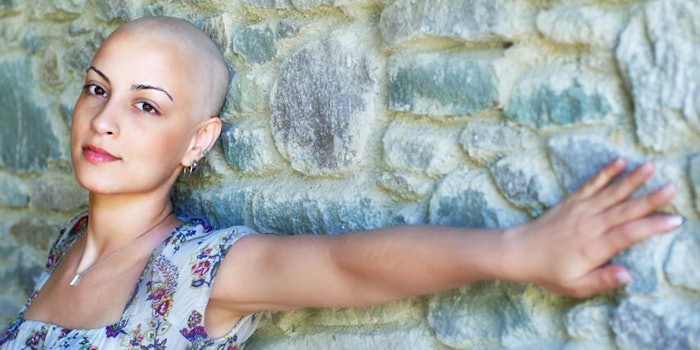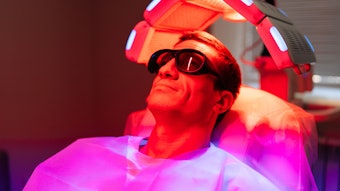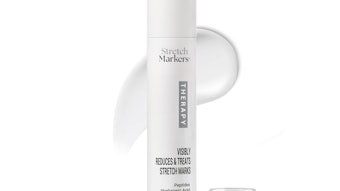
The rates of cancer are rising, and many survivors and those suffering from cancer are seeking out spas for relaxation and help with their appearance. Chemotherapy and radiation are often used as a treatment for the disease, often leading to the loss of hair including eyebrows and lashes.
Eyelash and Eyebrow Purpose
Although people typically view eyelashes and eyebrows as beauty enhancers, particularly for women, both of these hair features serve a purpose.
Eyelashes. Eyelashes are fine hairs, which grow at the eyelid to perform several functions. Their primary function is to protect the eyes from small particles such as dust, sand or debris from entering and harming the eye. The second function is to provide a warning from danger for the eye. Eyelashes are highly sensitive to the touch, providing a warning when an object may be too close to the eye.
Eyebrows. Eyebrows serve a number of functions in our culture today aside from their beauty function and contribution to a distinctive appearance. The most important function is providing a means of non-verbal communication. They are one of our most expressive facial features, telling someone your thoughts with just a simple movement up or down. We all know what different eyebrow positions mean. This feature of expression is bound with our emotions.
Chemotherapy and Hair Loss
Eyelashes and eyebrows lost as a result of many chemotherapy drugs can cause psychological issues with a person’s body image and appearance. This effect is seen more pronounced in women, but also affects men. Cancer can have a debilitating effect on the body and this is further compounded when a person starts to deal with image issues such as lash and brow loss.
Until spa therapists start to work with clients who are experiencing lash and brow loss, it is hard to comprehend what a negative impact this has on the human psyche. Having the skills to teach a person about their brows is empowering and is highly recommended. The lashes and brows do grow back post cancer treatment, but a person may experience a few cycles of eyebrow loss as their body continues to recover.
A spa experience. A spa owner shared an experience with me after waxing the brows of someone who had undergone cancer treatment. They noted, “I hope you can help me. One of my estheticians recently did a brow waxing for a client who had previously completed cancer treatment. The client was fully aware that there may possibly be side effects, but she wanted to proceed with the waxing anyway. During our follow-up call with her, she mentioned she stayed extremely red for the entire evening. Two days later, there were three little sores that had began to dry up and scab. We are looking for some guidance in this area. Can you help us? We would be grateful for any help you can provide at all.”
I responded, “Thanks for your inquiry. Unfortunately, these things happen when spa therapists plus the actual survivor themselves are not well-versed on possible negative side effects resulting from spa treatments after cancer treatment, and even during the recovery process.
Once a person has undergone cancer treatment, their skin is usually never the same. We consider this a ‘new normal’ and the skin has to be treated with extreme care. Many spa treatments need to be handled on an “inching forward” slowly aspect. Each person responds differently, and many treatment protocols are different depending on the type of cancer, the aggressiveness of the cancer, etc. At this point, based on the response, I would consider waxing an ‘aggressive’ spa treatment due to many unknowns. Since very little information has been provided to me, my response is that I cannot provide a general protocol and standard; however, here are some key questions to consider.
- What type of cancer has this client had?
- What cancer treatment did this client have?
- When did she complete cancer treatment?
- What medications is she taking, if any?
- What known side effects are there to the medications, if any?
- How was her skin affected from cancer treatment (treatment specific)?
- Has she had any waxing since completing cancer treatment?
- Was any consideration given to perform a patch test first if the client has not had waxing done since completing cancer treatment?
- Has this client had an issue with facial hair prior to cancer treatment?
- Is the client now on hormone therapy, exacerbating excessive hair growth, even if just vellus hair?”
Be aware. Waxing someone who has undergone cancer treatment or anyone with compromised skin, can be a tricky situation. Spa therapists and spa owners treating those who have treated for cancer should be aware of possible negative outcomes to waxing the brow of someone with compromised skin and know how to approach it. There can also be a negative impact if a spa or therapist refuses to provide the facial/brow waxing. The client may simply go down the road and refuse to impart any information to spa therapists at the other location, which leaves those spa therapists vulnerable to ‘causing harm.’
Training. Education for both the spa therapist and survivors is absolutely necessary. This is why completed intake forms are so necessary and why a client needs to sign off on a treatment even if cautioned about possible repercussions. Oncology Esthetics Foundation Training (OEFT) is available to spa therapists, where they can learn about this disease, the treatment and side effects. The training ensures safe adaptations being taught to people undergoing cancer treatment and those recovering from cancer treatment. Spa owners and managers may want to consider sending at least one of their spa therapists to attend this training, allowing their spa to ensure safe treatments to all cancer survivors.
Focus: Breast Cancer
A diagnosis of breast cancer has a strong social and psychological impact on women. Younger women often are devastated, terrified and lost. They may have concerns with preserving fertility or having young children and families to care for. Many younger women are establishing early relationships and working on emerging careers. Moreover, when friends and peers are healthy and active, the experience of diagnosis and treatment may feel particularly isolating.
In general, when a person is diagnosed with breast cancer, they will feel like they are on an emotional roller coaster. Their feelings may fluctuate and they may feel scared, shocked, sad, angry, guilty, anxious, confused, overwhelmed, out of control, vulnerable or in denial. They may find their feelings changing.
Psychological distress among patients with breast cancer is common and is linked to worse clinical outcomes. Depressive and anxiety symptoms affect up to 40% of breast cancer patients1 and depression is associated with a higher relative risk of mortality in individuals with breast cancer.2 The risk of developing a depressive disorder is highest in the first year after receiving the breast cancer diagnosis.3
Empathetic Not Sympathetic
For many, a cancer diagnosis can shake their entire world, including their sense of self and their belief system. They may reassess their values and priorities in life and what seemed important before may not seem so important to them now. Do not be surprised if your client changes her services with you after a diagnosis. She may either place an emphasis on taking care of herself or she will place emphasis on exercising or something else instead of a spa service. Try not to be judgemental, what you need to impart is empathy and understanding without being sympathetic.
As a spa therapist/esthetician, you will need to remind yourself everybody has a different way of coping with cancer. There is no right or wrong way for a person to feel. Your client may be optimistic if their cancer will be effectively treated, but there may be times when their outlook may darken. If you feel your client needs some recommendations on how to handle their emotions, suggest journaling, walking, yoga, medication, joining a support group or talking to an oncology psychologist.
Beauty intervention: Health in The Mirror, an initiative at the San Raffaele Hospital in Milan, Italy, gathers a team of cancer specialists, psychologists, beauticians/estheticians, makeup artists, fashion experts and volunteers together monthly in a hospital setting. The focus of this initiative is to make the patient feel more comfortable with herself by helping her feel pretty during cancer treatment. The target is to make beauty therapy/esthetics an intervention as a part and parcel of the therapy for the patient. This initiative is still in its early days and the initial results look promising. The patients who participated to date shared their own feelings and sensations: how they view a hospital, how they feel pampered during this monthly visit, why they go out after this visit, the outfits they wear now and why they thought they would never again wear them as cancer patients. Husbands also share that after these gatherings their wives gush with joy and laughter, just as they would have, prior to the diagnosis. These same patients express their desire to look healthy and feel normal. A key component for them to look healthy and feel normal is to have natural looking brows and lashes.
Levels of anxiety, depression and quality of life are evaluated at the beginning of each session, at the end of each session and three months later. The outcomes have shown: a significant decrease in depression, an increase in quality of life and a decrease in levels of anxiety. This stable improvement confirms the importance of including psychosocial support interventions with conventional medical treatments. It represents an example of humanization of medical care in the oncology field.
Be Confident
At some point, nearly every spa therapist will encounter a spa client who has, who is and who will be diagnosed with cancer in their lifetime. With empowering knowledge, every spa therapist can safely modify any spa treatment to ensure the client’s safety and improved quality of life.
The spa therapist’s work is compelling, but it can also be overwhelming. At the end of the day, we got into this business to touch, perhaps to nurture, perhaps to find meaning, but providing safe modifications can win you a client for life. This aspect of spa care is empowering and rewarding.
REFERENCES
- D Von Ah and DH Kang, Correlates of mood disturbance in women with breast cancer: Patterns over time. J Adv Nurs 61(6) 676-689 (2008)
- K Hjerl et al, Depression as a prognostic factor for breast cancer mortality, Psychosomatics 44 24-30 (2003)
- JR Fann et al, Major depression after breast cancer: A review of epidemiology and treatment, Gen Hosp Psychiatry 30:112-126 (2008)











